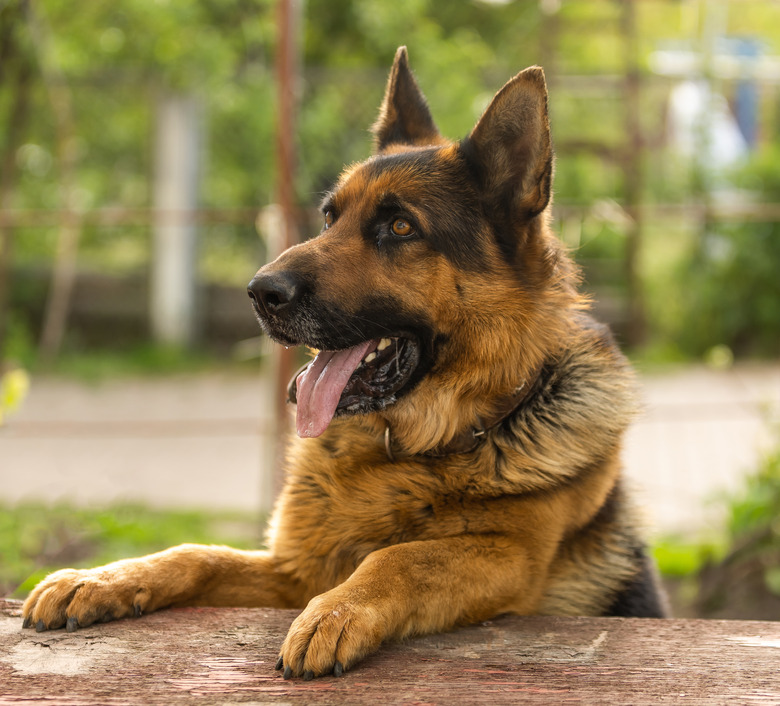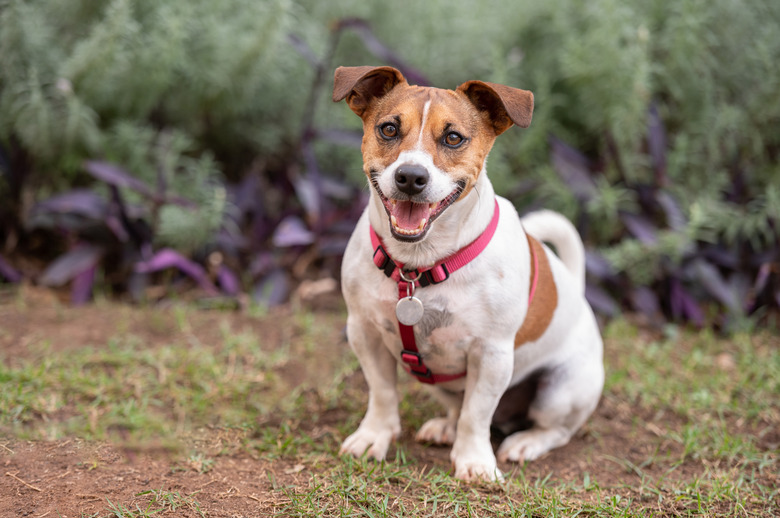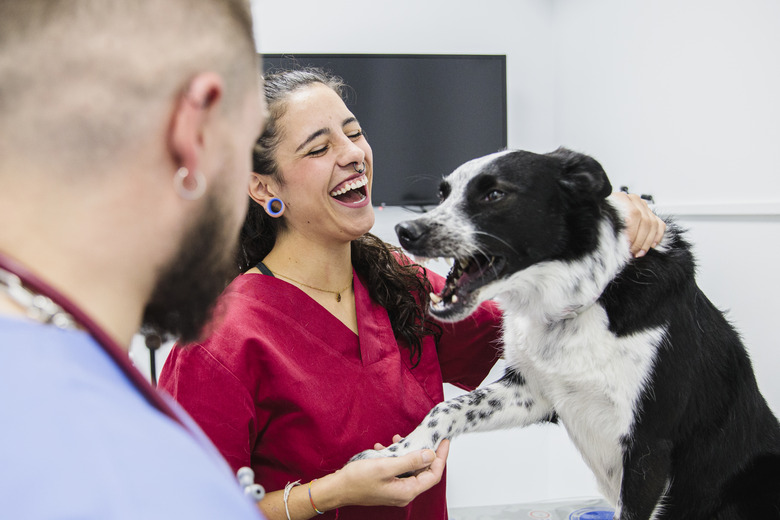Dog Eye Warts: Causes And Removal
Wartlike growths around your dog's eyes or mouth are health conditions that are rarely a cause for concern. Although these warts are unattractive and may bother your pet, they are most often benign growths that cause no harm. Warts are either caused by infection with canine papillomavirus, or the growths are benign tumors called sebaceous epitheliomas. Another benign growth is the sebaceous adenoma. The type of wart and the age of the dog determine the course of treatment.
What do dog eye warts look like?
What do dog eye warts look like?
Most dog eye warts are small, round, bumpy, and hairless with a rough surface similar in appearance to human warts. They usually appear in or around the dog's mouth or eyes and are the same color as the surrounding tissue.
Sebaceous epitheliomas and sebaceous adenomas are slow-growing, pink or dark-colored, and resemble cauliflower heads. They appear on the eyelids or other parts of the body, most often in older dogs. They may secrete a liquid that forms a crust. Occasionally, they may break open and bleed.
Causes of dog eye warts
Causes of dog eye warts
In puppies and young dogs under 2 years of age, most eye warts are caused by canine papillomavirus. The virus disrupts the normal cell division and regeneration processes, causing cells to proliferate abnormally.
Canine papillomavirus is a highly transmissible disease. It's most common in very young and elderly dogs because their immune system is not as strong. The disease is passed through indirect or direct contact with infected tissue or items an infected dog has touched, such as a food or water bowl or toy.
Sebaceous epitheliomas and sebaceous adenomas occur when cells within the sebaceous glands multiply abnormally. The sebaceous glands are attached to hair follicles and produce an oily substance known as sebum. The cause of sebaceous epitheliomas and sebaceous adenomas is unknown.
What to do when your dog gets warts
What to do when your dog gets warts
Most dog eye warts aren't cause for concern, but it is important to have them examined by a veterinarian. Sometimes in rare cases, cancerous growths, or carcinomas, develop. These may resemble warts to the untrained eye. Do not attempt to remove your dog's wart on your own, as you could injure yourself or your pet.
When is dog wart removal recommended?
When is dog wart removal recommended?
Although warts are unsightly, they're typically harmless. However, if a wart is bothering your dog or impairing their sight or ability to swallow, eat, drink, or breathe, your veterinarian may recommend removing it. A DVM may also suggest removal if there are numerous warts or if the wart is breaking open and bleeding, as this could result in an infection.
If a biopsy determines your dog's growth is cancerous, it will have to be removed. Additional treatment, such as radiation therapy or chemotherapy, may be necessary as well.
How to remove a dog eye wart
1. See your veterinarian to determine the cause of the wart
In puppies and young dogs under 2 years of age, warts are often caused by infection with canine papillomavirus. These rough-surface, round warts typically appear in or around the dog's mouth or eyes.
2. Ask your veterinarian for a biopsy
Papillomavirus in young dogs with developing immune systems is generally not a concern. In older dogs, however, papillomavirus may be a sign of another condition, and a biopsy will determine whether the growth is cancerous.
3. Watch and wait to see if your dog improves
In almost all cases, papillomavirus warts require no treatment. As young dogs mature and their immune system strengthens, they will usually fight the viral infection on their own, and the warts will recede.
This is a slow process, however, and may take one to five months for warts in or around the mouth to recede; it could take longer for warts near the eyes to regress. For warts that don't go away or are taking longer to regress, your veterinarian may recommend surgical removal or other treatment options.
4. Bolster your dog's immune system
Help your dog fight off the virus with dietary supplements to strengthen their immunity. Beneficial vitamins and minerals include vitamin C to improve resistance to infection, zinc to promote healing, and omega fatty acids to increase energy production. Other helpful supplements include vitamin B complex, folic acid, magnesium, and echinacea. Consult with your veterinarian before feeding your dog any dietary supplements.
Removing sebaceous epitheliomas in dogs
Consult your veterinarian
Consult your veterinarian to determine if the wart-like growth is benign or not. Sebaceous epitheliomas and sebaceous adenomas are pink or darker-colored wartlike growths on the eyelids and other areas of the body and generally occur in older dogs. They are benign, but dogs may develop cancerous wartlike growths.
Watch for growth changes in your dog's eye wart
In almost all cases, sebaceous epitheliomas or ademonas require no treatment. They will not recede like papillomavirus warts, but they generally cause no pain or discomfort.
Because they typically grow on the dog's eyelid, the growth may irritate the dog's cornea and could lead to conjunctivitis, an inflammation of the cornea that sometimes requires antibiotic treatment. Any change in the size or color of the wart, however, is a sign that it may be cancerous and should be checked by your veterinarian.
Discuss surgical removal with your veterinarian
Surgical removal might be recommended, particularly if your dog continuously scratches at the wart and causes it to bleed. Another option for removal is cryosurgery, though not all veterinary hospitals offer this. Surgery should always be performed by a licensed veterinarian. Do not attempt to remove your dog's eye wart at home, as this could lead to serious injury or an infection.
Anesthesia is required for the surgery. Because sebaceous epitheliomas and adenomas often occur in elderly dogs, the risks of surgery may outweigh the benefits. A veterinarian will perform a pre-anesthetic workup ahead of time to determine if it's safe for your dog to have anesthesia. This includes a thorough physical exam, CBC, chemistry, and urinalysis. If your elderly dog has a heart condition or other underlying medical conditions, other testing before anesthesia might be needed.
The bottom line
The bottom line
Dogs commonly develop warts in or on the dog's skin around the eyes and mouth. Although these are usually harmless, it can impact your pet health so it's important to have them checked out by a licensed veterinarian to determine their cause and rule out cancer. A DVM may also suggest surgical removal of canine warts if they are at risk of infection or cause discomfort.



